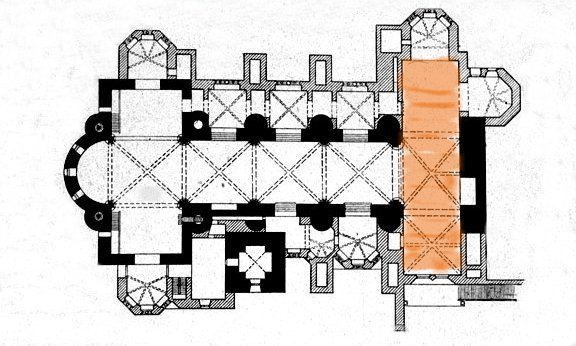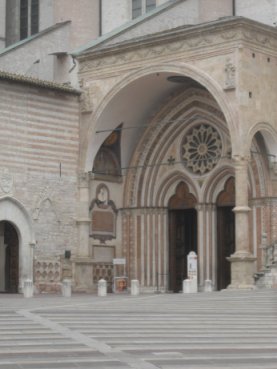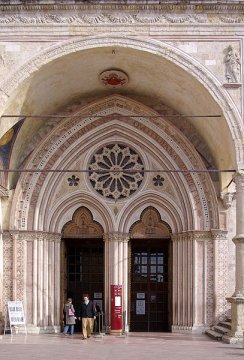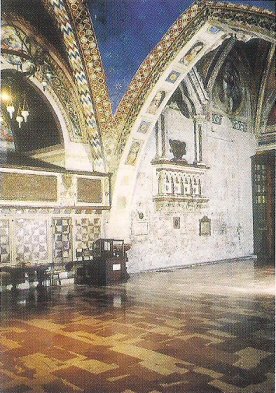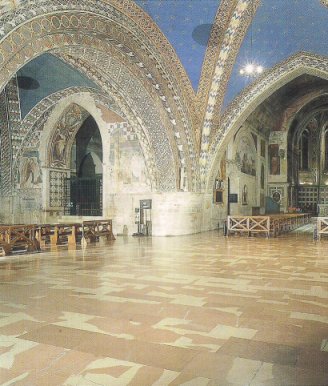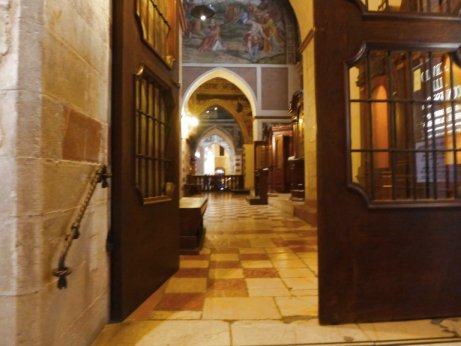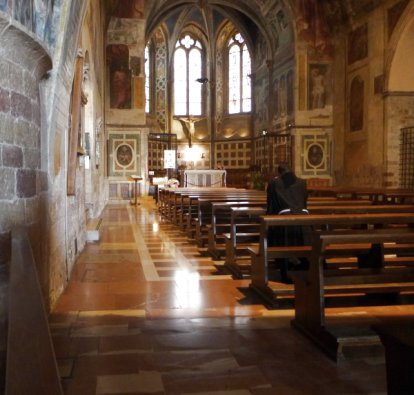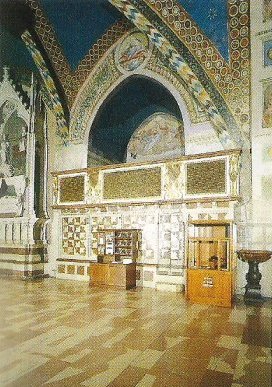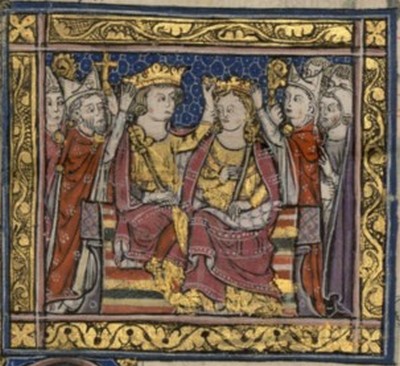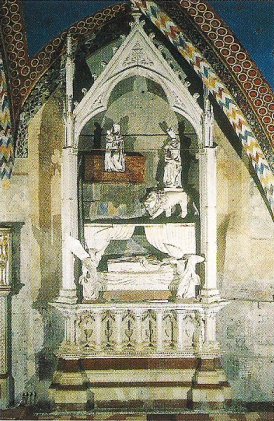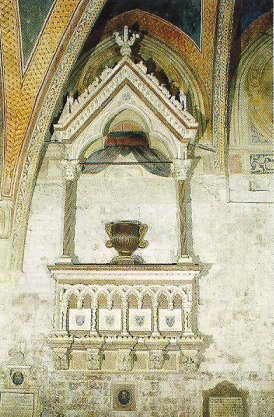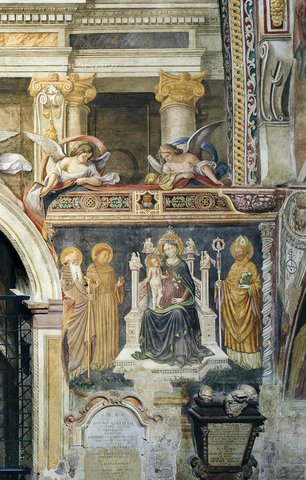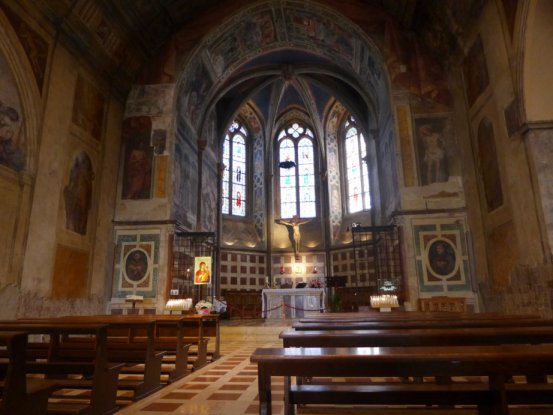|
San Francesco, Assisi - Lower Church |
|
|
Narthex |
|
| This space is effectively a second transept. Originally the entrance was on the east side, where the three bay nave begins now. A single storey narthex, possibly open and colonnaded, fronted the east wall, but when the upper church was extended a supporting wall was needed and the enclosed narthex existing now was created. At this time the entrance was moved to the south side, facilitating the access for pilgrims. Three chapels lead off from here, and there are some interesting funeral monuments. | |
|
|
|
|
Entrance The very elegant double door entrance dates from the late thirteenth century, while the portico was built in 1487. Remarkably, they complement each other perfectly. |
|
|
|
|
|
Views of the narthex |
|
|
|
|
|
|
|
|
Cantoria dei Nepis |
|
|
|
|
| Monuments The Narthex has these two splendid monuments. Luckily for historians with time on their hands, no-one can agree about who they actually commemorate. The monument on the left below was described from early times as the 'tomb of the Emperor of Constantinople' and the suggested candidate is John of Brienne, a French aristocrat and crusader who married well. Apart from Constantinople, he also became King of Jerusalem, but (it is said) he died penniless in the habit of a Franciscan friar. The Wikipedia entry will tell you more of his extraordinary life. Here he is at the marriage that made him King of Jerusalem. |
|
|
|
|
| Not everyone agrees that it is him, though; another theory is that this is the tomb of the Queen of Cyprus. Which one? No-one knows. The Cerchis were important Florentine Guelfs. The porphyry vase, once used as a holy water stoup, was according to some early chroniclers, given to the church by the same Queen of Cyprus that some believe is buried in the John of Brienne tomb. |
|
|
|
|
| Frescoes The fresco on the left below (but not the surround) of a Madonna with Saints is attributed to Ottaviano Nelli (c 1375 - 1444) an artist from Gubbio. Other frescoes are rather later, being painted by Cesare Sermei and Girolamo Martelli in the 1640s. |
|
|
|
|
|
Back to San Francesco Lower Church page 1 Home page - explore the site |
|
